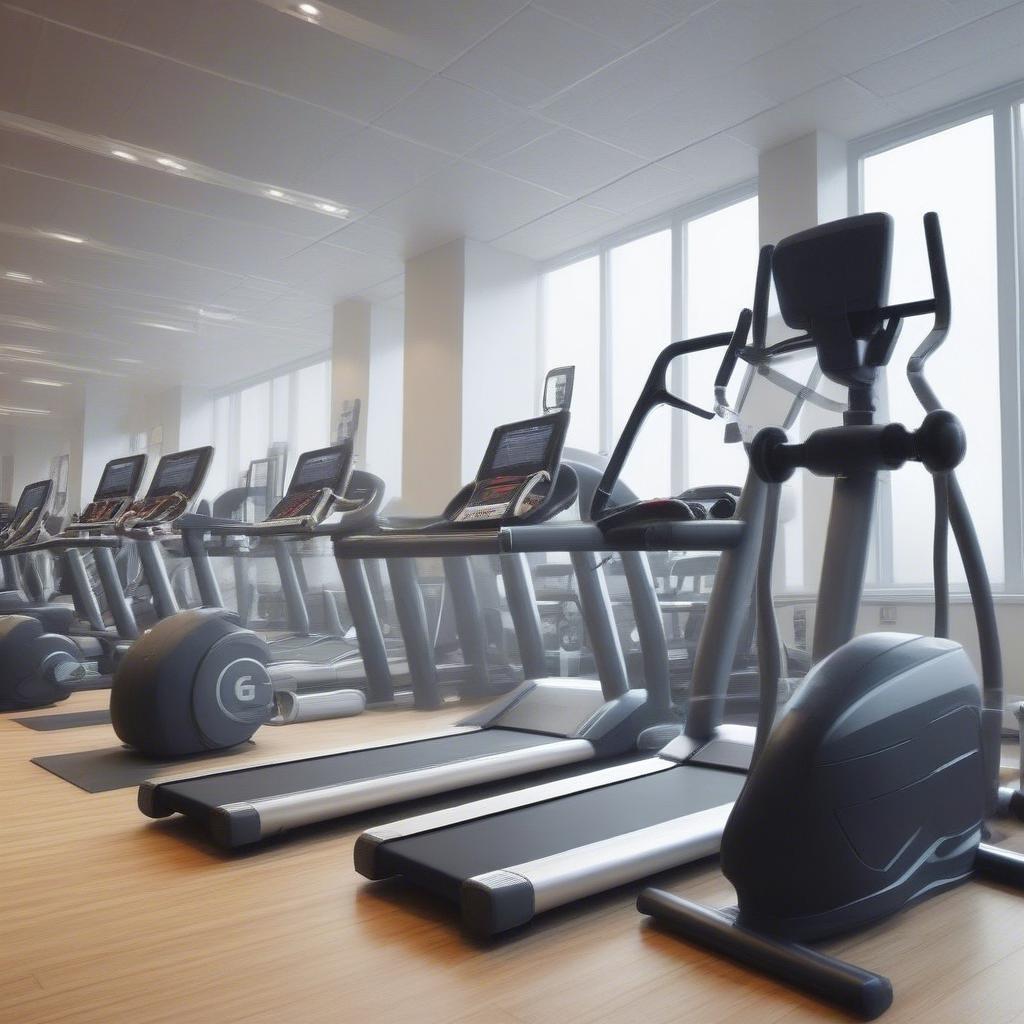
Running a gym is more than just pumping iron and pushing limits; it’s a business that needs a healthy heart – and that heart is your cash flow. Without consistent, positive gym cash flow, even the most passionate gym owner can find themselves struggling. This article will guide you through actionable strategies to boost your fitness business finances and master financial management, turning your passion for fitness into a thriving, sustainable enterprise.
Understanding Your Gym’s Cash Flow: The Foundation of Financial Health
Before diving into solutions, let’s clarify what cash flow actually means in the context of your gym. It’s simply the movement of money in and out of your business. Positive cash flow means more money is coming in than going out – a sign of a healthy, growing business. Negative cash flow? That’s a red flag signaling the need for immediate action.
Why Is Cash Flow So Crucial for Your Gym?
- Paying the Bills: It’s simple – you need cash to cover rent, utilities, staff salaries, equipment maintenance, and marketing expenses.
- Growth & Expansion: Want to add new equipment, open another location, or hire more staff? Positive cash flow fuels these aspirations.
- Managing Unexpected Costs: Broken equipment, emergency repairs, or a sudden dip in membership – cash reserves are vital for navigating unexpected challenges.
- Investment Opportunities: Strong gym cash flow allows you to seize opportunities for growth and innovation without straining your finances.
- Long-Term Sustainability: A consistent positive cash flow is the bedrock of a thriving, long-lasting gym business.
The Cash Flow Equation: What You Need To Know
Cash Flow = Total Revenue (money coming in) – Total Expenses (money going out)
It seems simple, right? But within those two categories are a multitude of factors influencing your fitness business finances. Understanding these factors is the first step in taking control of your cash flow.
Key Factors Affecting Gym Cash Flow
- Membership Sales: The lifeblood of your business. New memberships directly impact cash coming in.
- Membership Retention: Keeping existing members is more cost-effective than acquiring new ones. High churn hurts gym cash flow.
- Upselling & Add-ons: Personal training, merchandise, supplements, and other add-ons provide a powerful boost to revenue.
- Operating Costs: Rent, utilities, salaries, equipment maintenance – the expenses that keep your gym running.
- Marketing & Advertising: Essential for attracting new members, but these costs need to be managed effectively.
- Seasonal Fluctuations: Gyms often see a drop in membership during certain times of the year, impacting cash flow.
- Debt Repayments: Loan repayments can significantly impact cash flow if not carefully managed.
Strategies To Improve Your Gym’s Cash Flow: Practical Steps You Can Take
Now that we understand the ‘why’, let’s get into the ‘how’. Here are actionable strategies you can implement today to improve your gym cash flow and ensure financial management success.
Boosting Revenue: Filling the Funnel
Improving gym cash flow starts by increasing the money flowing into your business. Here are several ways to generate more revenue.
1. Optimizing Membership Sales
- Diverse Membership Options: Offer a variety of packages to cater to different budgets and needs – monthly, quarterly, annual, family plans, student discounts.
- Introductory Offers: Attract new members with limited-time discounts, free trials, or a reduced enrollment fee.
- Referral Programs: Reward current members for bringing in new clients with discounts or free perks.
- Online Membership Options: Streamline the signup process by allowing members to purchase memberships online.
- Clear Pricing Structure: Make your membership pricing easily understandable and transparent.
2. Mastering Upselling and Cross-Selling
- Personal Training Packages: Offer personalized training sessions to members seeking more focused guidance and results.
- Group Fitness Classes: Provide diverse class options with varying price points to appeal to different needs.
- Merchandise Sales: Sell branded apparel, accessories, and fitness gear to generate extra revenue.
- Supplement & Nutrition Products: Offer high-quality supplements and protein powders for added profit.
- Challenge Programs: Create fun, structured challenges with added benefits like nutrition advice or personal coaching.
3. Exploring Additional Revenue Streams
- Facility Rentals: Rent out your gym space for special events, workshops, or private training.
- Corporate Wellness Programs: Partner with local companies to offer fitness programs for their employees.
- Host Workshops & Seminars: Offer specialized workshops on topics like nutrition, injury prevention, or specific training methods.
- Online Training & Content: Create online training programs, meal plans, and other digital content to reach a broader audience.
- Partnerships: Collaborate with related businesses, such as physical therapists or nutritionists, for referral revenue.
Reducing Expenses: Streamlining Your Operation
Lowering expenses is just as vital as increasing revenue for positive fitness business finances. Let’s examine how to keep costs under control.
1. Negotiating with Vendors
- Review Existing Contracts: Regularly audit your contracts with suppliers for better pricing.
- Shop Around: Get quotes from multiple vendors for equipment, supplies, and utilities.
- Bulk Purchasing: If possible, buy items in bulk to save money per unit.
- Building Relationships: Develop strong relationships with vendors for favorable terms.
2. Optimizing Energy Consumption
- LED Lighting: Switch to energy-efficient LED lighting to lower your electricity bill.
- Motion Sensors: Install motion sensors to automatically turn off lights when areas are not in use.
- Programmable Thermostats: Use programmable thermostats to control heating and cooling based on your business hours.
- Regular Maintenance: Ensure your HVAC systems are well-maintained for maximum efficiency.
3. Managing Labor Costs
- Efficient Scheduling: Optimize staffing schedules to match peak and off-peak hours.
- Cross-Training: Train employees to perform multiple roles for more flexibility and reduced staff costs.
- Performance-Based Incentives: Implement performance-based incentives to boost productivity.
- Employee Retention: Invest in employee training and development to reduce staff turnover, which is costly.
4. Minimizing Equipment Costs
- Preventive Maintenance: Conduct regular maintenance to avoid expensive repairs and extend the life of your equipment.
- Leasing Equipment: Consider leasing options to reduce upfront capital costs.
- Buy Refurbished Equipment: Buying certified refurbished gym equipment can save you money.
- Warranty Claims: Be sure to utilise warranties on your equipment if issues arise.
5. Reducing Marketing Expenses
- Track Marketing ROI: Monitor which marketing efforts are yielding the best results and adjust your budget accordingly.
- Utilize Social Media: Engage with your target audience on social media platforms for free or low-cost advertising.
- Local Partnerships: Collaborate with local businesses to reach a wider audience.
- Customer Retention Strategies: Focus on retaining existing members, which is cheaper than acquiring new ones.
Managing Debt Effectively: Keeping Control of Your Liabilities
Debt can be a necessary tool for growth, but it needs careful management. Bad debt management can seriously impact gym cash flow.
1. Evaluate and Prioritize Debt
- List All Debts: List all outstanding debts including loans, credit lines, and vendor invoices.
- Prioritize High-Interest Debts: Focus on paying off high-interest debt first to save money in the long run.
- Negotiate Better Terms: Contact lenders to explore options for lower interest rates or extended repayment periods.
2. Debt Consolidation
- Combine Multiple Debts: Consolidate multiple high-interest debts into one loan with a lower interest rate.
- Seek Professional Guidance: Consult with a financial advisor to determine the best debt consolidation strategy for your business.
3. Debt Reduction Strategies
- Increase Revenue: Implement strategies for increasing revenue (as mentioned above) to pay down debt faster.
- Cut Back on Expenses: Reduce expenses to free up capital to accelerate debt payments.
- Use Windfalls Wisely: Apply any unexpected income to reduce debt.
Improving Your Billing & Collection Process: Ensuring Money Comes In On Time
The process of getting paid is a vital aspect of managing your fitness business finances. Streamlining your billing processes ensures that money flows consistently into your business.
1. Clear Payment Policies
- Transparent Billing: Ensure membership terms, billing schedules, and cancellation policies are clearly communicated to members.
- Multiple Payment Options: Offer a variety of payment options, including credit cards, debit cards, bank transfers, and direct debit.
- Automated Recurring Billing: Use automated billing systems for recurring membership dues.
- Reminders for Late Payments: Implement automated reminder systems to notify members of upcoming or late payments.
2. Streamlined Collections
- Prompt Invoicing: Send invoices to members promptly for services and products.
- Easy Payment Methods: Make it as easy as possible for members to pay their bills.
- Follow-Up on Late Payments: Develop a structured process for following up on late payments.
- Consider a Collection Agency: If necessary, enlist the services of a professional collection agency to recover outstanding debts.
Creating a Detailed Financial Plan: A Roadmap to Success
Having a financial plan is essential for managing your gym cash flow. It provides a framework for making sound financial decisions.
1. Develop a Budget
- Track Income and Expenses: Regularly track all income and expenses to understand your financial position.
- Forecast Future Income and Expenses: Predict future revenue and expenses based on your historical data.
- Set Financial Goals: Define realistic financial goals for your business.
- Use Budgeting Software: Employ financial tools for budget tracking and reporting.
2. Monitor Cash Flow Regularly
- Cash Flow Statement: Generate monthly or quarterly cash flow statements to monitor the movement of money in your business.
- Key Performance Indicators (KPIs): Track key metrics such as membership sales, churn rate, cost per acquisition, and average customer value.
- Review Performance: Regularly review your financial performance and make adjustments to your strategies as needed.
3. Financial Projections
- Project Future Performance: Develop projections for future revenue and expenses based on your business plan and market conditions.
- Use Financial Modeling: Use financial modeling to explore different scenarios and understand their potential impact on your cash flow.
- Adapt to Change: Review and update your financial projections on a regular basis to adapt to changing market conditions.
The Benefits of Improving Your Gym’s Cash Flow
Improving gym cash flow offers significant benefits to the business. Here are some key advantages:
- Financial Stability: Positive cash flow provides a stable financial foundation, enabling you to weather economic uncertainties.
- Growth Opportunities: You’ll have the resources to invest in expansion, upgrade equipment, and hire talented staff.
- Increased Profitability: A focus on cash flow helps you maximize profit potential.
- Reduced Stress: Knowing your finances are under control reduces stress and allows you to focus on your passion: fitness!
- Long-Term Success: Positive and consistent gym cash flow is the foundation for long-term business viability.
Learn Business: Your Partner in Financial Success
At Learn Business, we understand the challenges faced by gym owners in managing their fitness business finances. That’s why we provide tailored guidance and resources to help you master financial management and improve your gym cash flow.
How Learn Business Supports Your Gym
- Customizable Financial Templates: Access professionally designed templates for budgeting, cash flow projections, financial statements, and more.
- Expert Guidance: Receive personalized support from experienced business advisors who understand the gym industry.
- Educational Resources: Gain access to a library of articles, courses, and videos on essential business topics, including financial management, marketing, and operations.
- Community Support: Connect with other gym owners and industry experts to share best practices and learn from each other.
How Learn Business templates can help:
- Cash Flow Forecast Template: Accurately project your cash flow by meticulously detailing expected revenue and expenses, crucial for informed decision-making about your gym’s operations.
- Monthly Budget Template: Track your monthly spending with ease by meticulously categorizing costs, allowing for a clear financial picture and identification of areas to optimize.
- Membership Pricing Calculator: Quickly determine optimal membership fees by analyzing your business expenses and target profit margins, ensuring the profitability of your membership options.
- Financial Statement Template: Effortlessly compile your balance sheet, income statement, and cash flow statement, providing a clear and organized financial overview of your gym.
- Break-Even Analysis Template: Easily calculate the sales volume needed to cover costs and achieve profitability, crucial for your financial planning and management.
- Expense Tracker: Monitor daily operational expenses by using templates that allow you to categorise and track every expense for in-depth analysis.
- Sales Report Template: Track your membership sales, retail sales, personal training and classes sales to allow for accurate performance tracking for your financial goals.
By utilizing these powerful resources, Learn Business empowers you to take control of your finances and build a thriving, sustainable gym business. Let us be your partner on your journey to financial success.
Final Thoughts: Your Path to Improved Cash Flow
Improving gym cash flow is not an overnight fix; it’s an ongoing process that requires consistent effort, strategic planning, and adaptability. By implementing the strategies and tips outlined in this article, you can build a solid financial foundation for your gym, enabling you to achieve your business goals and create a thriving fitness community. Remember, understanding your numbers, controlling your costs, and maximizing your revenue are the keys to unlocking your gym’s full financial potential. Use Learn Business as your partner, with our templates and resources, we’ll help you manage your finances with confidence. Don’t just dream of a successful gym – make it happen, starting with mastering your cash flow.



Leave a Reply